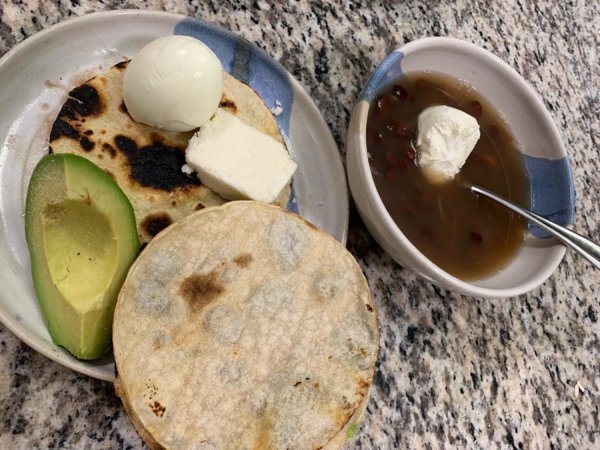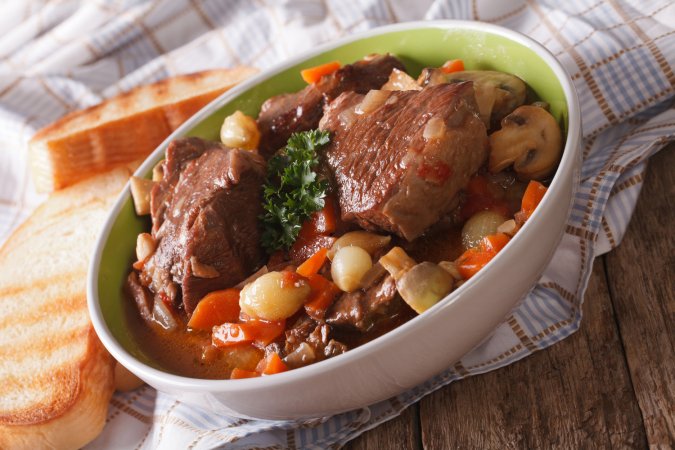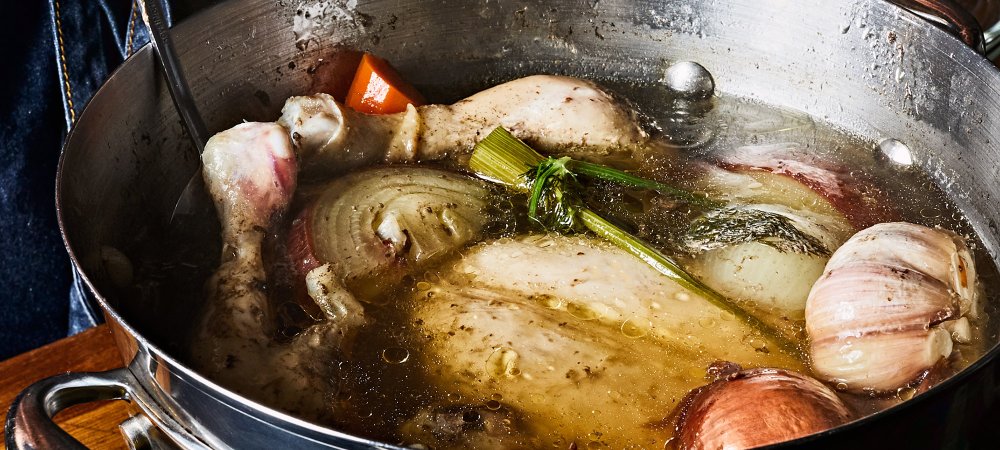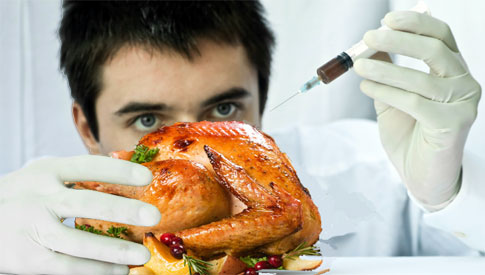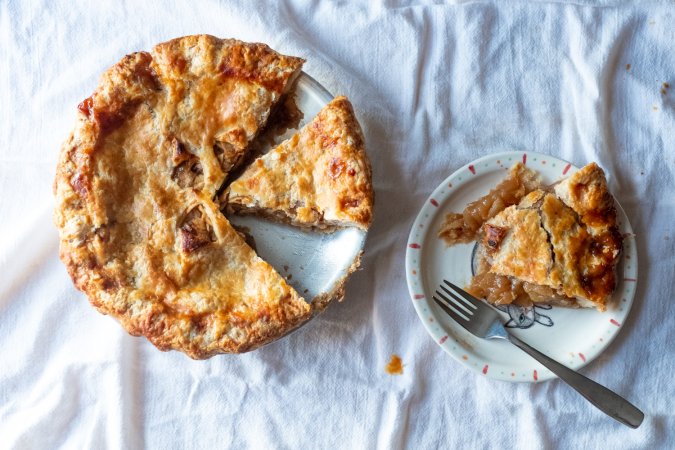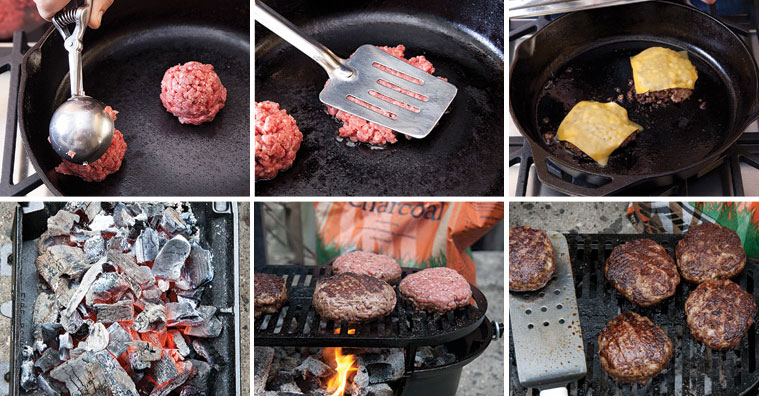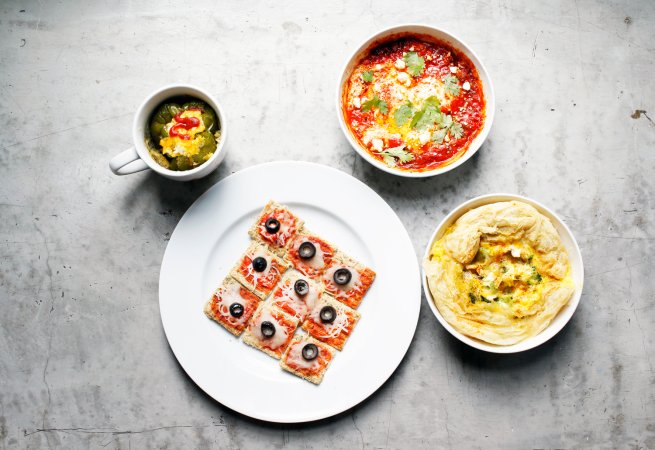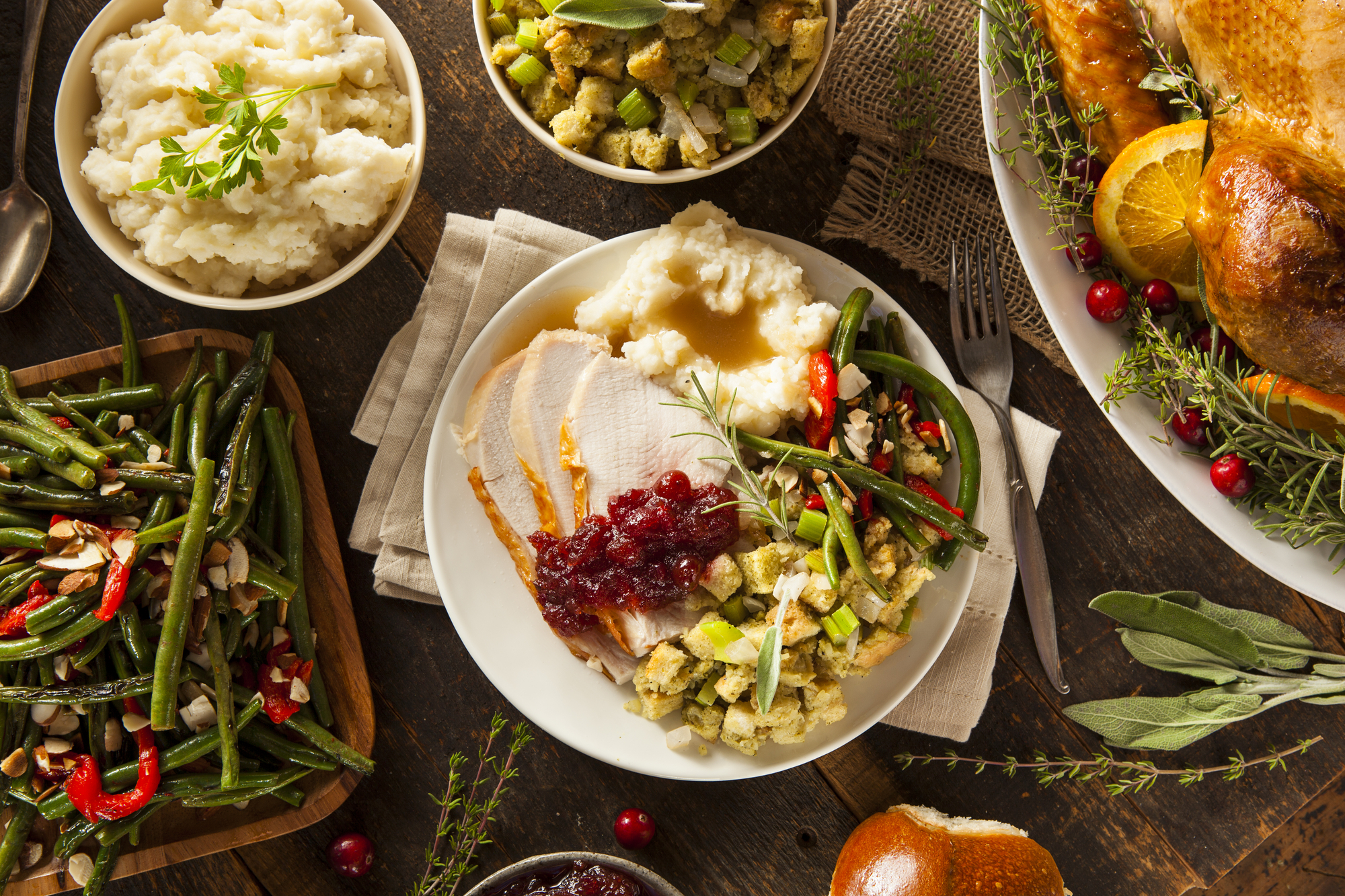

Even for the most confident cooks, Thanksgiving dinner is a massive undertaking. The sheer scale and scope of this holiday’s menu are so over-the-top that it’s tempting to drop serious cash on products that promise to make the whole process a breeze.
Don’t fall for the hype. With very few exceptions, the gizmos and gadgets marketed this time of year are completely unnecessary—and they don’t hold a candle to cheap kitchen staples. For every hundred-dollar pan or fancy knife you’ll use once a year, there’s an affordable alternative you’ll use over and over again. Here’s what to look for.
Skip the expensive ovenware and go straight for the aluminum

Conventional wisdom says that if you’re going to roast a turkey, you need a deep roasting pan with a V-rack. This just isn’t true. Not only are pan-and-rack sets quite pricey, they don’t even work that well. The shape of a V-rack ensures that the moisture from rendering juices condenses on the underside of the turkey, drips back into the pan, and repeats forever. All you’ll get from a V-rack is a soggy-bottomed bird.
Instead, buy an aluminum sheet pan (half-size—roughly 18 by 13 inches—is the best bet for most home ovens) and a stainless steel cooling rack of the same size to set inside. Heck, go nuts and buy a couple of each. Whether you’re cooking a whole turkey or going the spatchcock route, this setup gives you plenty of surface area to work with and enough air circulation to prevent soggy skin.
Aluminum pie tins are also the way to go—just not the ones you might be thinking of. To be clear, I’m not talking about the disposable pans you can get in a 10-pack this time of year. I’m talking about no-frills, anodized aluminum tins like the one above, which I got for $3.50.
Why aluminum? It heats up quickly and transfers heat efficiently, while ceramic and glass—especially glass—take ages to absorb heat and then refuse to let it go. By the time your pan is hot enough to cook the filling, the crust has either turned to mush or burned to a crisp. So, pretty as they are, save the cute vintage Pyrex and fancy French stoneware for stuffing, scalloped potatoes, or really anything but pie.
Carving knives are just overpriced bread knives

I’ll admit that carving knives do look pretty cool—especially the ones with forked tips. But in reality, they’re functionally indistinguishable from just about any serrated knife. Instead of an unmanageably long, expensive knife you’ll pull out once or twice a year, get a high-quality bread knife or serrated “slicer” in a more practical size. A good one costs less than $15 and makes short work of everything from rustic loaves, to slippery tomatoes to, yes, a perfectly roasted turkey.
Don’t skimp on prep supplies

Smart prep work is key to avoiding day-of disasters—the more chopping and measuring you can get done ahead of time, the better. If you don’t already own a bench scraper and a ton of soup containers, get ready to change your life.
Plastic soup containers are lightweight, stackable, recyclable, microwave- and dishwasher-safe, and cheap as chips—in other words, God’s gift to prep work and leftovers. You can get a set of 48 quart-sized containers with lids for $20 on Amazon, but restaurant supply places typically sell them for even less, and reusing takeout containers is free. If you need to store hot food or plan to microwave leftovers in the containers, be sure to look for “microwave-safe” in the description or on the package.
The humble bench scraper, usually associated with baking, is the soup container’s best prep buddy. You know how much of a pain it is to scoop chopped vegetables into a bowl or a pot? Well, a bench scraper acts like a nice little shovel so you can get every last piece of chopped onion and celery into a container where it belongs. You’ll have a professional mise en place (a fancy French way of saying “a bunch of dishes of prepped ingredients”) going in no time at all.
Some things are worth the splurge
Even though the cheap stuff usually gets the job done, it’s hard to deny that buying—and using—high-end cookware feels amazing. If you’re looking to splurge this Thanksgiving, you can’t go wrong with a high-quality enameled Dutch oven or an immersion blender. They are true kitchen workhorses, which is exactly the sort of thing that’s worth some extra cash.
Dutch ovens are remarkably versatile, handling everything from soups, stocks, and braises to deep-frying with grace. Honestly, given enough serving dishes, I think you could cook a whole Thanksgiving dinner (except for the turkey) with a Dutch oven alone.
Immersion blenders are the problem-solvers of the kitchen. If you’ve got a lumpy gravy or slightly overdone custard, blitz it with an immersion blender; if you need to purée soup, roughly mash some potatoes, or pulverize a mountain of vegetables, an immersion blender will take care of it. I swear, I find a new use for mine every time I pull it out.
You might wonder why I’m not recommending a stand mixer here, and the answer is simple: Thanksgiving isn’t a cake holiday. (Also, they’re really expensive.) Unless you’re making a dozen meringue pies, you just don’t need a 30-pound whisking machine that takes up half a counter—and even then, a hand mixer would work just as well.
The true secret of Thanksgiving dinner is that it’s just that—dinner. Sure, it’s much larger than the ones we eat on a regular basis, but when you get right down to it, you don’t need a kitchen full of fancy tools to make it happen.

